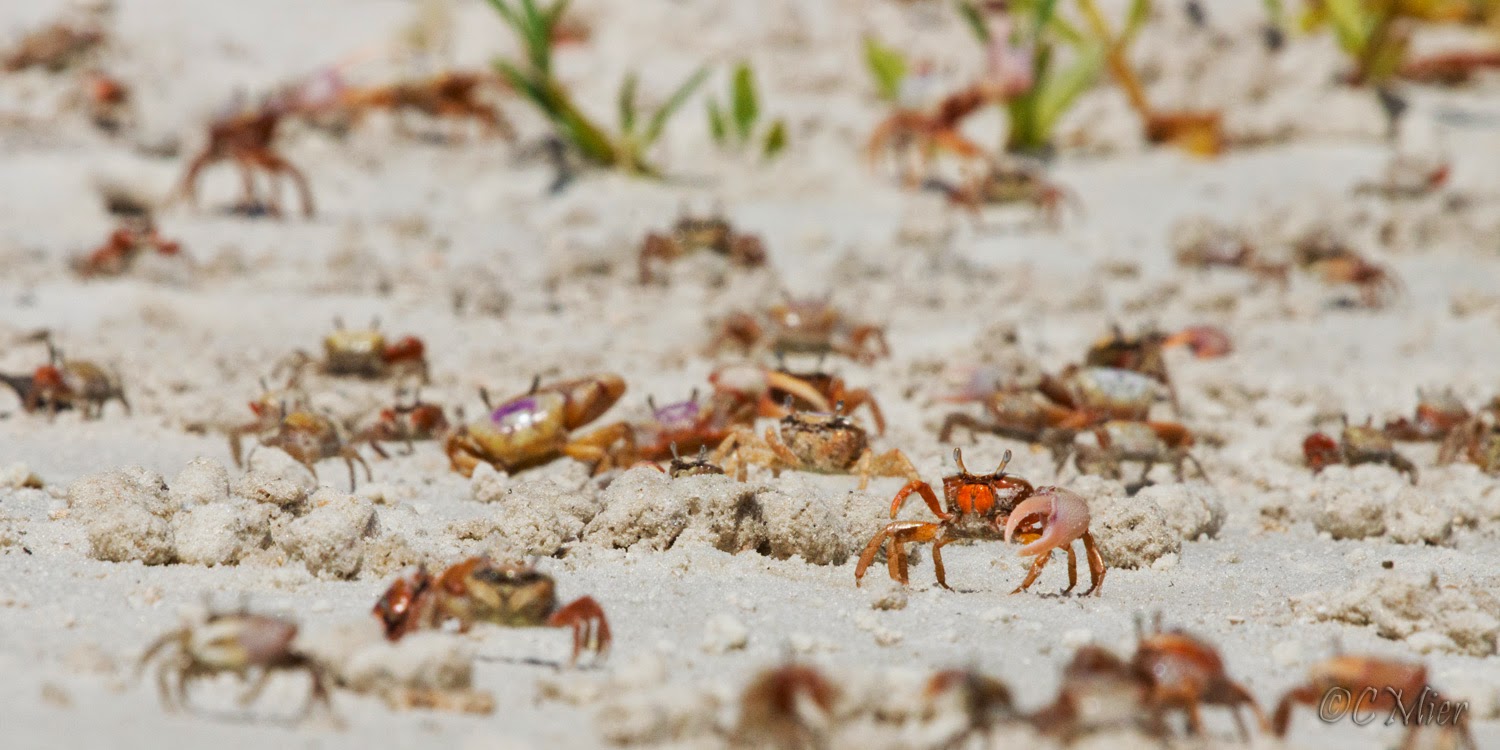Not really alone as I shared the island for two days with thousands of fiddler crabs. On the first day, I arrived at the northeast sand spit of the island. About two hours after arriving, I could finally grab the camera and walk the island.
After a bit of exploring, I walked past a part of the beach that was well protected from the winds and contained a tidal pool that would soon receive water with the incoming tide. This is where I began to notice several sand fiddler crabs running away from me to take refuge in their sand holes. I then noticed thousands of these little critters at the water's edge. The colony of tiny crabs covered an area of about 40 feet in length. They appeared to be heading toward higher ground where they could climb into their little burrows.
I ran back to camp and grabbed the telephoto lens. There was a one-foot drop-off from the sand to a small tidal pool that would soon be filled with water. I laid down on the low ground and propped my camera on the high edge of the sand so that I could be at eye level with the crabs. And the sun was behind me!
I had so much fun photographing them, my first time ever really observing them in great detail. Typically, these little crabs scurry away (side ways) and hide in a hole when you approach them. But this encounter was different. What I observed during my 30-40 min with the crabs were interesting behaviors that could be described as mating rituals and/or territorial disputes. That just about sums up the animal kingdom, does it not? Despite my presence, they stood their ground and at times got too close for my 400mm focusing length.
After getting home, I did my research on these crabs having never photographed them before that day. Indeed, the males were displaying themselves to other males by waving their super-sized claw in a threatening manner. I photographed a couple males fighting, one time with a female in the middle of the dispute.
The male also waved his claw while standing next to his hole. This could be for a couple reasons; to attract a potential mate or to warn approaching males that they are getting to close. In the meantime, several female and male crabs of varying sizes (from a thumb tip to as large as a fist) were moving away from the water and making their way to their respective holes. An interesting fact about the fiddler crab is it recognizes its own sand hole and will not enter any other hole, unless threatened enough. I read this but I also thought about it while observing a crab running away from me. It had several opportunities to run down a hole and take refuge, but instead it passed several of them until it reached its own.
As I watched them more, I noticed that the females sort of ran in packs, while the males stood alone near their respective burrow. What was likely happening is that the females were wandering around looking for a suitable mate. If a female takes an interest in a male, she will go inside its burrow, followed by the male. If she likes him, she will stay there a week or two and mate with him. If not, she comes back out after a few minutes and continues her search. Once the male has a mate, he will re-emerge from the hole and seals it with a sand ball before going back in.
Here are a few more interesting facts about the sand fiddler crab:
- The male crab can use only its small claw for eating, while the female has use of two claws.
- The sand balls on the beach are formed when the crab spits out the sand when eating. They also form these balls when digging a hole.
- They are good for the environment. Their burrow holes aerate the soil.
- The super-sized claw on the male can be two thirds of its body weight.
- If a male loses its super-sized claw, the other claw will grow to become super-sized and the other will regrow into normal size.
I have also written about my photography experiences with other crabs. Check it out if you are into crabs.
Horseshoe Crabs
Mangrove Crabs











No comments:
Post a Comment